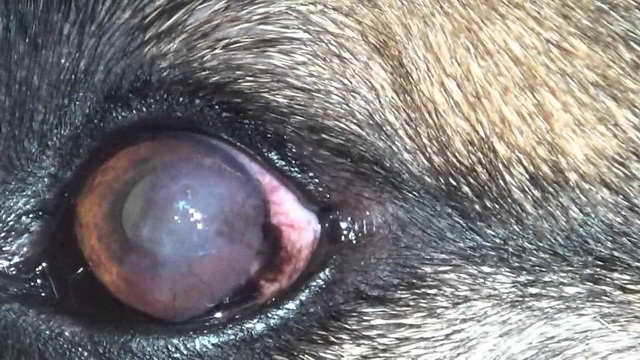
Signs and Symptoms of German Shepherd Pannus
A gray or black haze may develop across the cornea of your German Shepherd’s eye. These changes in the cornea can affect the dog’s vision and can even progress to blindness. This condition is more common in high-altitude dogs. German Shepherds may also be more prone to pannus, due to their exposure to ultraviolet rays. Unfortunately, treating pannus in dogs is difficult and expensive. Here are some signs and symptoms of this condition.
If your German Shepherd develops Pannus, you should look for signs and symptoms of this eye condition. First, you should look for bloodshot or weeping eyes. It may also have an opaque cornea and small white deposits. Early diagnosis is important because the condition can progress and cause more serious vision problems and even scarring. Symptoms of German Shepherd Pannus may improve over time, but the earlier you diagnose your dog, the better the outcome will be.
Another symptom of German Shepherd Pannus is cloudiness in the eye. This condition causes an abnormal amount of light to reach the eye and affects the retina. When this happens, the blood vessels in the retina shrink and the eye is blind. It may be possible to reverse this condition by limiting your dog’s exposure to sunlight. Although pannus is not curable, it can be slowed down or prevented by following a diet rich in protein.
The vet will look for other symptoms and perform an eye examination.
They may conduct diagnostic tests like an intraocular pressure test and fluorescein staining to see if the condition is associated with tears or tear deficiency. If there is an ulceration, biopsies will be performed to determine the cause of the condition. Those tests are simple and won’t cause your dog any undue stress.
To treat the condition, veterinarians generally prescribe corticosteroids or immune-modulating drugs. The main aim of these drugs is to reduce the swelling and inflammation of the eyelid and the scar tissue. Corticosteroids or Tacrolimus eye drops are common medications for German shepherd Pannus. Combined with topical eye medicines, these medications will also reduce the inflammation of the eye and improve the pigmentation in the cornea. Treatment for Pannus will depend on the severity of the condition when the disease is diagnosed. The veterinarian will prescribe anti-inflammatory medications that control the growth of blood vessels and prevent cloudiness in the eye. Injections of steroids are also used to suppress the immune system.
The sable German Shepherd looks very similar to its parent breed. It has long legs, erect ears, and a strong body. The sable German Shepherd has a distinctive sable coat. Puppies with this coat are black at birth, but gradually lighten as they get older. The back of the dog is the only part of the body that is black. However, sable German Shepherds can live to be up to thirteen years old. This breed is a wonderful pet.
The German Shepherd is an affectionate and loyal dog.
While they love spending time with their owners, they are also loyal guard dogs. When left alone for long periods, they can become weak and show signs of extreme stress. While the breed has a reputation for being aggressive, the owner must curb the dog’s aggressive tendencies to avoid the dog from becoming overly obnoxious. You should also exercise patience and discipline with your German Shepherd.
Early development signs of German Shepherd pannus may include dilated pupils or a glow in the eye. Moreover, the dogs’ eyes may be cloudy or swollen and can be very painful. They can also have difficulty seeing at night or in low-light conditions. If this occurs, you may need to seek the advice of a veterinarian. Thankfully, there are several treatments available to help you deal with the condition.
While the most common form of pannus affects the cornea, some dogs can also exhibit the disease on the nictitating membrane. The leading edge of the nictitans is depigmented, and the palpebral surface is red. These symptoms are the first signs of German shepherd pannus, and they are often cured with the right treatment. However, they are no cure for the disease, so it is best to seek help from a veterinarian if your German shepherd develops a case of pannus.
Chronic superficial keratitis is an inflammatory disease of the eyes that may lead to blindness. This disease is most common in the German Shepherd breed. It is a progressive, painful, and disabling condition that does not appear to be caused by classical autoimmune disease, pemphigus, or systemic lupus erythematosus. Symptoms of CSK may be related to aberrant MHC class II expression in the cornea. Infiltrating CD4 lymphocytes are responsible for the secretion of these inflammatory substances.
Leave a Reply